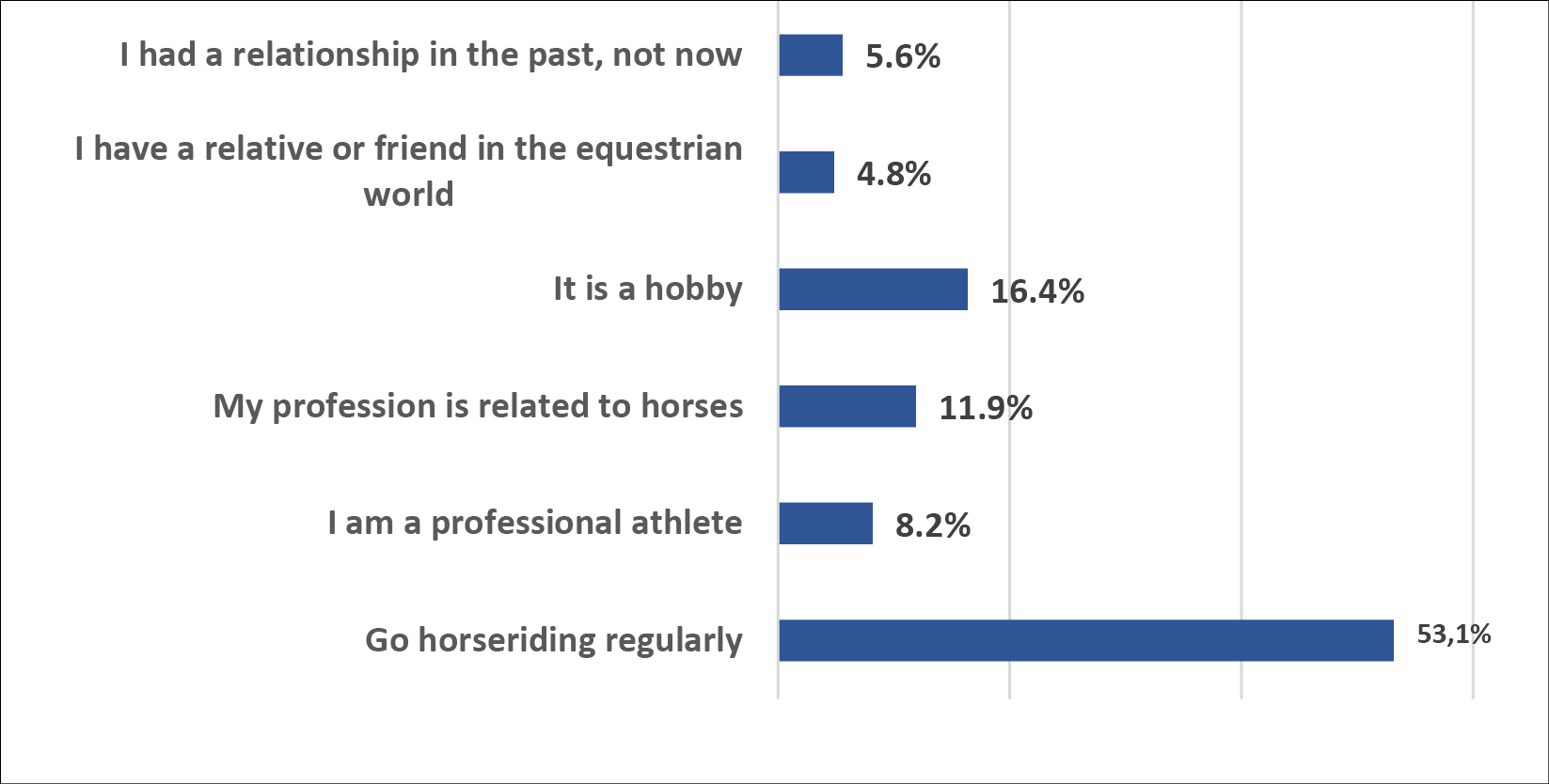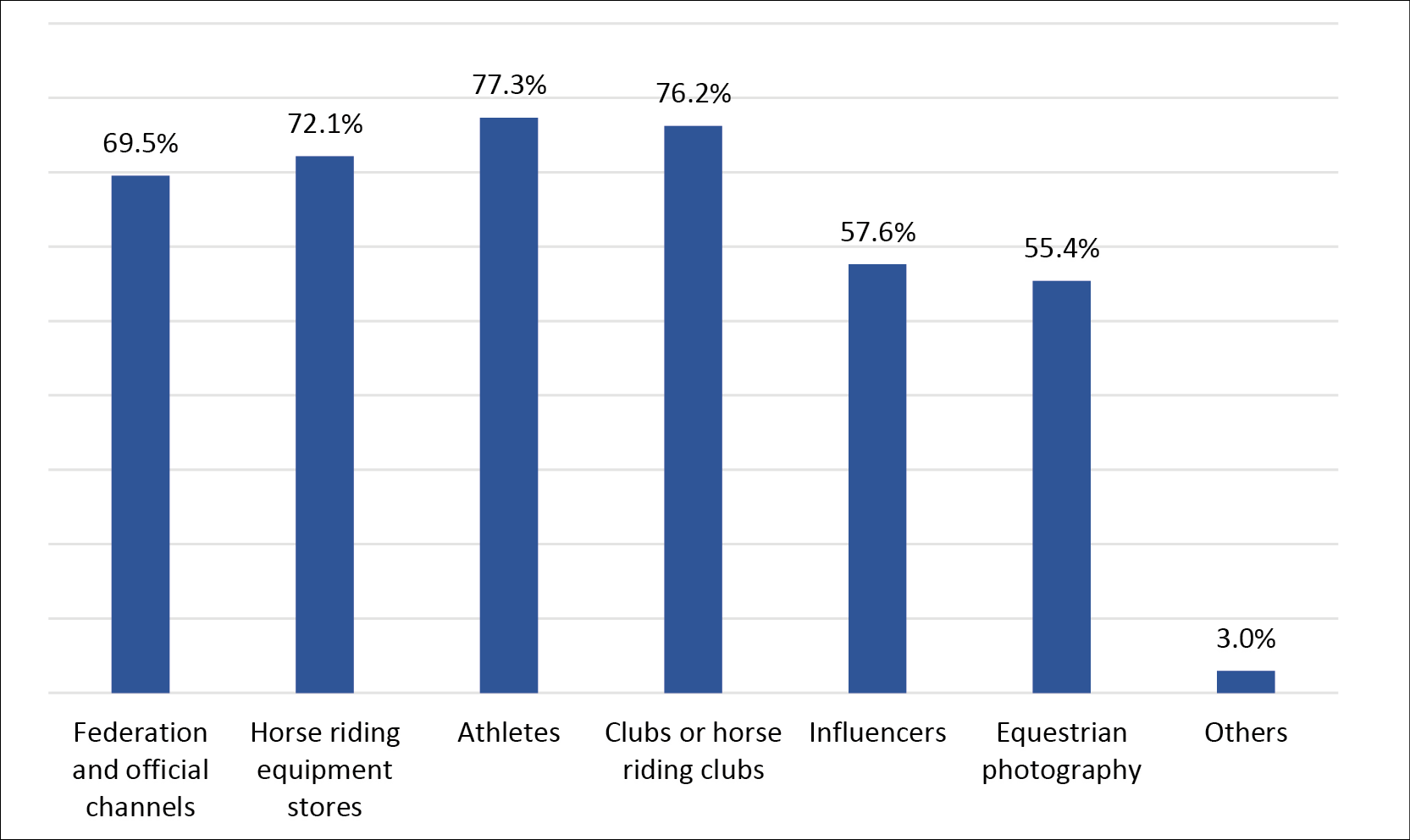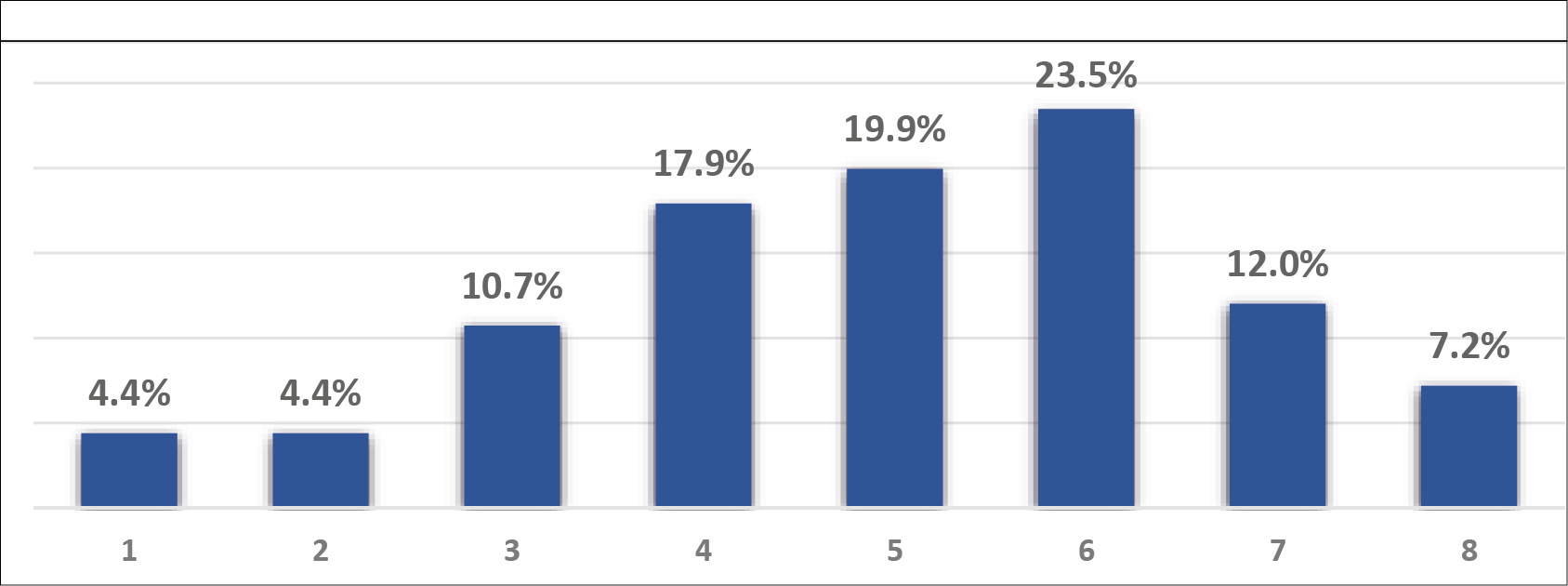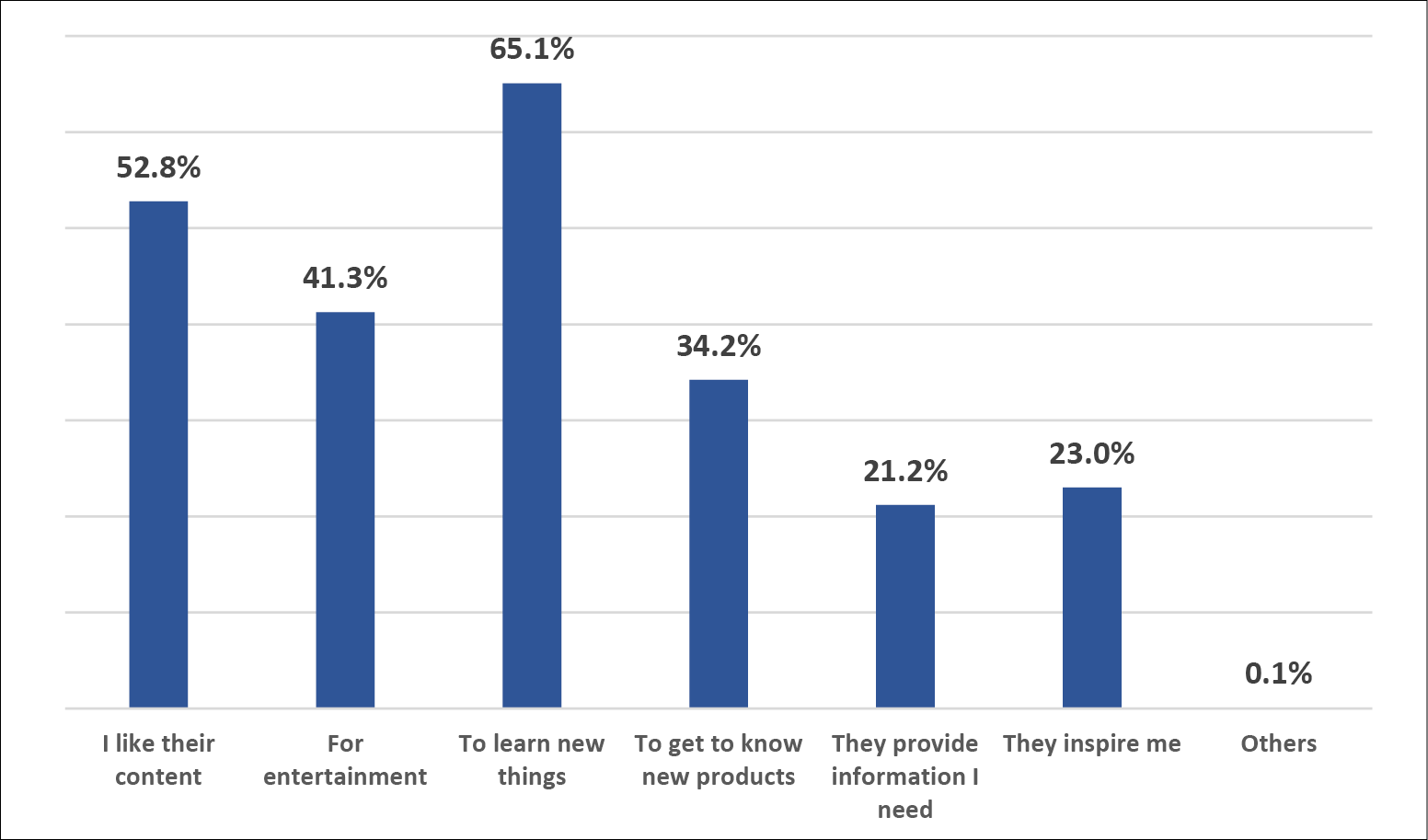6. Bibliographic references
Alonso-Rivas, J. y Grande-Esteban, I. (2004). Comportamiento del consumidor, Decisiones y estrategia de marketing. ESIC Editorial.
Álvarez-Alday, M. y Fernández-Villarán-Ara, A. (2012). Impacto económico del ocio en el siglo XXI. Arbor, 188(754), 351-363.
Antón-Clavé, S. (2007). Investigación y conocimiento en el ámbito de las grandes instalaciones recreativas. Los parques de ocio. En M. J. Monteagudo-Sánchez (coord.) (2007). El ocio en la investigación actual: una lectura desde ámbitos, disciplinas, grupos de población y contextos geográficos (67-82). Universidad de Deusto.
Aramendía-Muneta, M.E. (2017). Spread the Word. The Effect of Word of Mouth in e-Marketing. En G. Siegert, B. Von Rimscha & S. Grubenmann, (eds.). Commercial Communication in the Digital Age Information or Disinformation? (227-245). De Gruyter Mouton.
Arias-González, S. (2018). Comunicación del sector ecuestre en España. Análisis de caso: repercusión de los blogs hípicos frente a medios afines. Universidad Rey Juan Carlos.
Asociación Nacional de Criadores de Caballos de Pura Raza Española (2019). SICAB 2019 cierra sus puertas tras una exitosa 29ª edición de amplio respaldo institucional y de público. https://bit.ly/2QN7kAn
Bericat, E. (1998). La integración de los métodos cuantitativo y cualitativo en la investigación social: Significado y medida. Ariel.
Braunstein-Minkove, J.R.; Zhang, J.J. & Trail, G.T. (2011). Athlete endorser effectiveness: Model development and analysis. Sport, Business, and Management: An International Journal, 1(1), 93-114.
Buttle F. & Groeger L. (2017). Who says what to whom in what channel? A rules theoretic perspective on word-of-mouth marketing, Journal of Marketing Management, 33(13-14), 1035-1059.
Cabeza, M. C. y Prat, A. G. (2012). Ocio experiencial: antecedentes y características. Revista Arbor, 188(754), 265-281.
Campbell, C. & Farrell, J.R. (2020). More than meets the eye: The functional components underlying influencer marketing. Business Horizons, 63(4), 469-479.
Castelló-Martínez, A. y Del-Pino-Romero, C. (2015a). La comunicación publicitaria con influencers. Redmarka. Revista Digital de Marketing Aplicado, 1(14), 21-50.
Castelló-Martínez, A. y Del-Pino-Romero, C. (2015b). Prescriptores, marcas y tuits: el marketing de influencia. aDResearch ESIC: Revista Internacional de Investigación en Comunicación, 12, 86-106.
Celaya, J. (2011). La empresa en la Web 2.0. Gestión 2000.
Chien, P. M.; Cornwell, T.B. & Pappu, R. (2011). Sponsorship portfolio as a brand-image creation strategy. Journal of Business Research, 64, 142-149.
Clavijo-Ferreira, L., Pérez-Curiel, C., Luque-Ortiz, S. y Pedroni M. (2017). Social Media y Comunicación Corporativa: Nuevo reto en las empresas de Moda. En F.J. Herrero-Gutiérrez y C. Mateos-Martín. Del verbo al bit (2029-2059). Sociedad Latina de Comunicación Social.
Coll, P. y Micó-Sanz, J.L. (2019). Influencer Marketing in the Growth Hacking strategy of digital brands, Observatorio (OBS*), 13(2), 87-105
Dahlstrom, R., Nygaard, A. & Crosno, J.L. (2008). Strategic, metric, and methodological trends in marketing research and their implications for future theory and practice. Journal of Marketing Theory and Practice, 16(2), 139-152.
De-la-Cruz-Ayuso, C. (2006). Una lectura ética sobre la incidencia del ocio en nuestra sociedad. En M. Cuenca-Cabeza (2006). Aproximación multidisciplinar de los estudios de ocio (59-82). Publicaciones de la Universidad de Deusto
Deloitte (2013). Estudio del Impacto del Sector Ecuestre en España. Daemon Quest, Deloitte
Denzin, N.K. (1970). Sociological methods: a source book. Aldine Publishing Company.
Díaz-Iglesias, L.J. (2017). Soy marca: Quiero trabajar con influencers. Profit Editorial.
Dzwigol, H. (2020). Innovation in marketing research: quantitative and qualitative analysis. Marketing and Management of Innovations, 1, 128-135.
Establés, M.J., Guerrero-Pico, M. y Contreras-Espinosa, R.S. (2019). Jugadores, escritores e influencers en redes sociales: procesos de profesionalización entre adolescentes. Revista Latina de Comunicación Social, 74, 214-236.
Federación Española de Asociaciones de Ganado Selecto (2017). Pura Raza Española, Marca España: un proyecto hecho realidad. Revista Feagas, 23(40), 34-35
Forni, P. y De-Grande, P (2020). Triangulación y métodos mixtos en las ciencias sociales contemporáneas. Revista Mexicana de Sociología, 82(1), 159-189.
Freberg, K., Graham, K., McGaughey, K. & Freberg, L. A. (2011). Who are the social media influencers? A study of public perceptions of personality. Public Relations Review, 37(1), 90-92.
Gangadharbatla, H. (2009). Facebook Me: collective self-esteem, need to belong, and internet self-efficacy as predictors of the iGeneration’s attitudes toward social networking sites. Journal of Interactive Advertising, 8(2), 5-15.
Gómez-Nieto, B. (2018). El influencer: herramienta clave en el contexto digital de la publicidad engañosa. Methaodos. Revista de ciencias sociales, 6(1), 149-156.
González-López, T. (2018). La equitación y los usos sociales del caballo a través de los textos del siglo XVIII en España. Erasmo. Revista de Historia Bajomedieval y Moderna, 5, 17-40.
Gretzel, U. (2018). Influencer marketing in travel and tourism. En M. Sigala & U. Gretzel, (Eds.). Advances in social media for travel, tourism and hospitality: new perspectives, practice and cases (147-156). Routledge.
Grigorovici, D.M. & Constantin, C.D. (2004). Experiencing interactive advertising beyond rich media: Impacts of ad type and presence on brand effectiveness in 3D gaming immersive virtual environments. Journal of Interactive Advertising, 5(1), 22-36.
Gutiérrez-Aragón, Ó. (2016). Fundamentos de Administración de Empresas (2ª edición). Ediciones Pirámide
Herrera-Harold, H. (2012). Las redes sociales: una nueva herramienta de difusión. Revista Reflexiones, 91(2), 121-128.
Hontangas-Carrascosa, J., Mestre-Sancho, J.A. y Orts-Delgado, F. (2018). Género y deporte (El camino hacia la igualdad). Editorial Reus.
IAB Spain (2019). Estudio Anual de Redes Sociales. IAB Spain.
Instituto Nacional de Estadística (2019). Anuario Estadístico de España 2019. Instituto Nacional de Estadística.
Jin, S.V., Muqaddam, A. & Ryu, E. (2019). Instafamous and social media influencer marketing. Marketing Intelligence & Planning, 37(5), 567-579.
Jhala, J. y Sharma, R. (2016). Internet Use Among Adolescents. Journal of Indian Association for Child and Adolescent Mental Health, 12(1), 36-59.
Joinson, A. (2002). Understanding the psychology of internet behaviour: virtual worlds, real lives. Palgrave Macmillan
Kadekova, Z. & Holienčinova, M. (2018). Influencer marketing as a modern phenomenon creating a new frontier of virtual opportunities. Communication Today, 9(2), 90-105.
Kimmel, A. y Kitchen, P. (2014). Word of mouth and social media. Journal of Marketing Communications, 20(1), 2-4
Logroño-Tormo, M.T. y Llopis-Goig, R. (2020). Una tipología de espectadores teatrales en función de la influencia de diversos prescriptores y el uso de canales de información. Doxa Comunicación, 30, 127-143. https://doi.org/10.31921/doxacom.n30a6
Luque-Gil, A.M. (2006). Las rutas ecuestres como actividad deportiva, recreativa y turística. Baética. Estudios de Arte, Geografía e Historia, 28(1), 413-433.
Madrid Horse Week (2019). Dossier de prensa. IFEMA.
Martínez, J.A. (2015). David Falk: Algunas cuestiones abiertas para el marketing deportivo. RICYDE. Revista Internacional de Ciencias del Deporte, 11(40), 186-191.
Martínez-Sala, A.M., Monserrat-Gauchi, J. y Segarra-Saavedra, J. (2019). El influencer 2.0 turístico: de turista anónimo a líder de opinión. Revista Latina de Comunicación Social, 74, 1344-1365.
Mejía-Llano, J.C. (2019). Cálculo del retorno de la inversión (ROI) de redes sociales en sitios de venta (e-commerce). https://bit.ly/3azrRQP
Mihók, Z.S. y Castejón-Montijano, R. (2016). El sector ecuestre y la economía. Archivos de Zootecnia, 65(252), 481-488.
Ministerio de Agricultura, Pesca y Alimentación (2019). El sector equino en cifras. Principales indicadores económicos. MAPA, Subdirección General de Productos Ganaderos, Dirección General de Producciones y Mercados Agrarios.
Ministerio de Educación, Cultura y Deporte (2015). Encuesta Hábitos Deportivos, 2015. MECD, Subdirección General de Estadística y Estudios, Secretaría General Técnica.
Ministerio de Educación, Cultura y Deporte (2019). Anuario de Estadísticas Deportivas 2019. MCD, División de Estadística y Estudios, Secretaría General Técnica.
Moral-Moral, M. y Fernández-Alles M.T. (2012). Nuevas tendencias del marketing: El marketing experiencial. Revista Entelequia, 14, 237-251.
Muiños-Morales, P. (2017). Los influencers en el protocolo. Revista Estudios Institucionales, 4(6), 67-78.
Navío Navarro, M.; González-Díez, L. y Puebla-Martínez, B. (2018). La formación para la gestión de las redes sociales en los grados de comunicación en España y su adecuación a las competencias demandadas por las organizaciones. Doxa Comunicación, 26, 127-143.
Olsen, W. (2004). Triangulation in social research: qualitative and quantitative methods can really be mixed. En M. Holborn. Development in Sociology (103-121). Causeway Press.
Parreño, J.M. (2010). Marketing y videojuegos. ESIC Editorial.
Real Federación de Hípica Española (2018). Retos del sector equino en España. Jornada sobre Retos del Sector Equino en España, Ministerio de Agricultura, Pesca, Alimentación y Medio Ambiente, 25-04-2018.
Real Federación de Hípica Española (2019a). Estadísticas de competición. Evolución 2014-2019. https://bit.ly/2zeqY27
Real Federación de Hípica Española (2019b). Estimación de espectadores en competiciones hípicas nacionales e internacionales en España. https://bit.ly/2xNZNuE
Real Federación de Hípica Española (2019c). Resumen del total de licencias deportivas hípicas 2019. https://bit.ly/2RULKdG
Reverter-Masia, J. y Plaza-Montero, D. (2011). Ocio, deporte y turismo: Situación actual y líneas de negocio. Revista Deporte y Sociedad, 6(16), 1-31.
Ritzer, G. (2001). Explorations in the sociology of consumption. Sage.
Rossiter, J.R. & Smidts, A. (2012). Print advertising: Celebrity presenters. Journal of Business Research, 65, 874-879.
Sánchez-Guerrero, M.J. (2016). Desarrollo de nuevas metodologías de evaluación genética de la conformación funcional y del potencial deportivo del caballo de Pura Raza Española [Tesis Doctoral, Universidad de Córdoba].
Sánchez-Jiménez, M.A. (2018). The measurement of Return on Investment (ROI) in Social Media. Revista Espacios, 39(33), 2-14.
Santamaría-de-la-Piedra, E. y Meana, R.J. (2017). Redes sociales y fenómeno influencer. Reflexiones desde una perspectiva psicológica. Miscelánea Comillas: Revista de Ciencias Sociales y Humanas, 75(147), 443-469.
Sanz-Marcos, P., Jiménez-Marín, G., y Elías-Zambrano, R. (2019). La incorporación de la figura del influencer en las campañas publicitarias: Consecuencias para las agencias de publicidad españolas. adComunica, Revista Científica de Estrategias, Tendencias e Innovación en Comunicación, 18, 63-86
Schlesinger, W., Alvarado-Herrera, A. y Martí-Parreño, J. (2012). Patrocinio deportivo: la implicación del espectador y sus efectos en la identificación y lealtad. Cuadernos de Gestión, 12(2), 59-76.
Segado-Boj, F., Díaz-Campo, J. y Navarro-Sierra, N. (2020). Emociones y difusión de noticias sobre el cambio climático en redes sociales. Influencia de hábitos, actitudes previas y usos y gratificaciones en universitarios. Revista Latina de Comunicación Social, 75, 245-269.
Stanton, W., Etzel, M. y Walker, B. (2007). Fundamentos de marketing. Mcgraw-Hill Interamerica.
Stubb, C., Nyström, A.G. & Colliander, J. (2019). Influencer marketing: the impact of disclosing sponsorship compensation justification on sponsored content effectiveness. Journal of Communication Management, 23(2), 109-122.
Tirado, J. (2018). Retos del sector equino. Jornada sobre Retos del Sector Equino en España, Ministerio de Agricultura, Pesca, Alimentación y Medio Ambiente, 25-04-2018.
Tripp, C.; Jensen, T. D. & Carlson, L. (1994). The effects of multiple product endorsements by celebrities on consumers’ attitudes and intentions. Journal of Consumer Research, 20(4), 535-547.
Venegas, A. (2015). Marcas vs Influencers: matrimonio de conveniencia. Anuncios: Semanario de Publicidad y Marketing, 1516, 20-24
Webb, E.J., Campbell, D.T., Schwartz, R.D. & Sechrest, L. (1966). Unobtrusive measures: Nonreactive research in the social sciences. Rand McNally.






